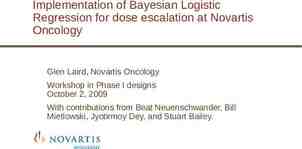8 Identifying Market Segments and Targets Marketing Management,
36 Slides2.91 MB
8 Identifying Market Segments and Targets Marketing Management, 13th ed
Chapter Questions What are the different levels of market segmentation? How can a company divide a market into segments? How should a company choose the most attractive target markets? What are the requirements for effective segmentation? Copyright 2009 Pearson Education, Inc. Publishing as Prentice Hall 8-2
Baby Boomers: A Lucrative Market Copyright 2009 Pearson Education, Inc. Publishing as Prentice Hall 8-3
Effective Targeting Requires Identify and profile distinct groups of buyers who differ in their needs and preferences Select one or more market segments to enter Establish and communicate the distinctive benefits of the market offering Copyright 2009 Pearson Education, Inc. Publishing as Prentice Hall 8-4
Ford’s Model T Followed a Mass Market Approach Copyright 2009 Pearson Education, Inc. Publishing as Prentice Hall 8-5
Four levels of Micromarketing Segments Niches Local areas Individuals Copyright 2009 Pearson Education, Inc. Publishing as Prentice Hall 8-6
What is a Market Segment? A market segment consists of a group of customers who share a similar set of needs ad wants. Copyright 2009 Pearson Education, Inc. Publishing as Prentice Hall 8-7
Gather.com: A Niche Social Networking Site Copyright 2009 Pearson Education, Inc. Publishing as Prentice Hall 8-8
Flexible Marketing Offerings Naked solution: Product and service elements that all segment members value Discretionary options: Some segment members value options but not all Copyright 2009 Pearson Education, Inc. Publishing as Prentice Hall 8-9
Preference Segments Homogeneous preferences exist when consumers want the same things Diffused preferences exist when consumers want very different things Clustered preferences reveal natural segments from groups with shared preferences Copyright 2009 Pearson Education, Inc. Publishing as Prentice Hall 8-10
Niche Marketers Enterprise Rent-A-Car targets the insurancereplacement market Copyright 2009 Pearson Education, Inc. Publishing as Prentice Hall 8-11
Baskin Robbins Focuses on Local Marketing Copyright 2009 Pearson Education, Inc. Publishing as Prentice Hall 8-12
The Long Tail Chris Anderson explains the long tail equation: The lower the cost of distribution, the more you can economically offer without having to predict demand; The more you can offer, the greater the chance that you will be able to tap latent demand for minority tastes; and Aggregate enough minority taste, and you may find a new market. Copyright 2009 Pearson Education, Inc. Publishing as Prentice Hall 8-13
What is Customerization? Customerization combines operationally driven mass customization with customized marketing in a way that empowers consumers to design the product and service offering of their choice. Copyright 2009 Pearson Education, Inc. Publishing as Prentice Hall 8-14
Segmenting Consumer Markets Geographic Geographic Demographic Demographic Psychographic Psychographic Behavioral Behavioral Copyright 2009 Pearson Education, Inc. Publishing as Prentice Hall 8-15
Claritas’ Prizm Education and affluence Family life cycle Urbanization Race and ethnicity Mobility Copyright 2009 Pearson Education, Inc. Publishing as Prentice Hall 8-16
Demographic Segmentation Age Age and and Life Life Cycle Cycle Life Life Stage Stage Gender Gender Income Income Generation Generation Social Social Class Class Copyright 2009 Pearson Education, Inc. Publishing as Prentice Hall 8-17
Toyota Scion Targets Gen Y Consumers Copyright 2009 Pearson Education, Inc. Publishing as Prentice Hall 8-18
Dove Targets Women Copyright 2009 Pearson Education, Inc. Publishing as Prentice Hall 8-19
Figure 8.1 The VALS Segmentation System Copyright 2009 Pearson Education, Inc. Publishing as Prentice Hall 8-20
Behavioral Segmentation Decision Roles Initiator Influencer Decider Buyer User Behavioral Variables Occasions Benefits User Status Usage Rate Buyer-Readiness Loyalty Status Attitude Copyright 2009 Pearson Education, Inc. Publishing as Prentice Hall 8-21
The Brand Funnel Illustrates Variations in the Buyer-Readiness Stage Aware Ever tried Recent trial Occasional user Regular user Most often used Copyright 2009 Pearson Education, Inc. Publishing as Prentice Hall 8-22
Loyalty Status Hard-core Split loyals Shifting loyals Switchers Copyright 2009 Pearson Education, Inc. Publishing as Prentice Hall 8-23
Figure 8.3 Behavioral Segmentation Breakdown Copyright 2009 Pearson Education, Inc. Publishing as Prentice Hall 8-24
The Conversion Model Convertible Shallow Users Strongly unavailable Weakly unavailable Average Entrenched Nonusers Ambivalent Copyright 2009 Pearson Education, Inc. Publishing as Prentice Hall Available 8-25
Segmenting for Business Markets Demographic Demographic Operating Operating Variable Variable Purchasing Purchasing Approaches Approaches Situational Situational Factors Factors Personal Personal Characteristics Characteristics Copyright 2009 Pearson Education, Inc. Publishing as Prentice Hall 8-26
Steps in Segmentation Process Needs-based segmentation Segment identification Segment attractiveness Marketing-Mix Strategy Segment profitability Segment positioning Segment acid test Copyright 2009 Pearson Education, Inc. Publishing as Prentice Hall 8-27
Effective Segmentation Criteria Measurable Measurable Substantial Substantial Accessible Accessible Differentiable Differentiable Actionable Actionable Copyright 2009 Pearson Education, Inc. Publishing as Prentice Hall 8-28
Figure 8.4 Patterns of Target Market Selection Copyright 2009 Pearson Education, Inc. Publishing as Prentice Hall 8-29
Figure 8.4 Patterns of Target Market Selection Copyright 2009 Pearson Education, Inc. Publishing as Prentice Hall 8-30
Figure 8.4 Patterns of Target Market Selection Copyright 2009 Pearson Education, Inc. Publishing as Prentice Hall 8-31
Crest Whitestrips Follows a Multisegment Strategy Copyright 2009 Pearson Education, Inc. Publishing as Prentice Hall 8-32
Figure 8.5 Segment-by-Segment Invasion Plan Copyright 2009 Pearson Education, Inc. Publishing as Prentice Hall 8-33
Pepsi used Megamarketing in India Copyright 2009 Pearson Education, Inc. Publishing as Prentice Hall 8-34
Marketing Debate Is mass marketing dead? Take a position: 1. Mass marketing is dead. or 2. Mass marketing is still a viable way to build a profitable brand. Copyright 2009 Pearson Education, Inc. Publishing as Prentice Hall 8-35
Marketing Discussion Think of various product categories. How would you classify yourself in terms of the various segmentation schemes? How would marketing be more or less effective for you depending upon the segment involved? Copyright 2009 Pearson Education, Inc. Publishing as Prentice Hall 8-36









































